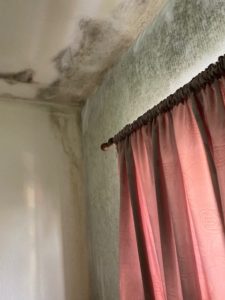Why Black Spot Mould forms in Houses: Why it returns and how to prevent it
Often, getting into a new house is pretty much like falling in love for the very first time. This may possibly give you a blind eye to some critical imperfections that might gradually crack away at your undying love for your haven down the lane, perhaps resulting in an inevitable heartbreak.
Some of the red flags include black spot mould that typically occurs in cold, damp winter or even a warm and humid summer season. On the same note, daily life activities in your house can form moisture indoors and black spot mould.
Black spot mould removal company Manchester….
What are Black Spot Moulds, and why do they form in Houses?
Mould is a type of fungus. There are many types of moulds, while most occur indoors, others form outdoors as well. It is not clear how many types of moulds exist, but researchers believe that there are hundreds upon thousands of mould types.
These are some of the most common moulds found in your house:
- Alternaria – This is usually found in damp areas, for example, around leaking sinks and soggy bathrooms.
- Aspergillus – This is often found in dusty and powdery food items, such as cooking flour and construction materials, for example, drywalls.
- Cladosporium – This mould type is typically found in cold areas as well as warm regions. You will always find this type on some fabrics or wood surfaces.
- Penicillium – This is often found in swampy water bodies or completely damaged water. It mostly appears bluish-green.
But the question is: why do they occur, in the first place?
Most mould types produce spores that spread out by floating or drifting in the air. Almost every home setting has mould, and they will grow if the conditions are perfect, which entails dampness – with moisture and warmth. Some surfaces that are prone to moulds include pieces of damp wood, wet fabrics, paper, and even plastic or glass. On materials, such as wood or paper, moulds eat away the surfaces, further destroying their integrity.
Moulds can form in many areas and home items, including damp walls, soggy books, or wet toys. It can soon become a disaster to your highly-valued items, turning them into mouldy remnants that appear only right for the trash can. Notwithstanding, moulds can be a health risk to you, your family, and your pets. They can cause allergies and a plethora of bacterial infections.
 Why do Black Spot Moulds Return?
Why do Black Spot Moulds Return?
In the first place, considering that moulds produce spores that float in the air, they can multiply fast. If your house continues to remain damp even after removing moulds from surfaces, they can quickly return by the spores dropping in the wet and humid areas of the house, including constantly leaking sinks and bathrooms. If you reintroduce rotting items in the house, such as paper, plastic, or pieces of wood, you will find moulds developing on them.
Some wall spaces that retain wetness can be the best points where moulds can regrow. Also, poor air circulation, for example, poorly ventilated houses or homes with tightly-sealed windows, can create the right environment for moulds to return, especially in dark and soggy points in the home. Moreover, if you fail to use the right antiseptics to clean your surfaces, or if you choose to paint over mould-infected walls or surfaces, they can recur.
How to prevent Black Spot Moulds
By all means, you have to work towards preventing the growth of Black spot moulds. You must seek the services of professional home maintenance companies. They will help lift the legwork for you. You can apply the following techniques for preventing moulds in your house:
- Clean surfaces: Use water and soap to wash the surfaces. You can still apply highly-diluted bleach to clean surfaces and rinse thoroughly. Check wet spaces for moulds and clean them too. It will help to dispose of highly-affected items, such as decomposing pieces of wood.
- Lower humidity levels: After fixing all leakages in the house, use a dehumidifier to reduce the humidity areas, especially if you live in highly humid settings.
- Dry clothes and carpets: Ensure that all your clothes dry entirely before introducing them to your house. Also, avoid putting carpets or mats in your bathroom, to prevent the accumulation of moisture which is a remedy for moulds.
- Use antifungal paints: Ordinary paints are often prone to moulds. You may need to pick a special paint that has antifungal components that are ideal for preventing the growth of moulds.
- Call professionals: If you still experience problems preventing mould in your house, speak to us. We will apply a step-by-step and ongoing prevention process for the regrowth of moulds.
To conclude,
Black spot moulds can be a menace to your home. They not only destroy the aesthetics of your living spaces, but they also damage the integrity of your home, especially wood walls. They, too, can be a health risk to your family or even pets, which includes affecting the quality of air in your home.
Most of the time, black spot moulds can return even after treating them. This is why you need experts to do the job professionally and ensure that they don’t return for the long term. Ongoing prevention of moulds in your home is the key to eradicating them, once and for all.
If you are struggling to remove black spot moulds entirely out of your home, we’ve got you covered. We believe in the premise that there is no job too small to be done. That’s right, at Bradwell Maintenance, you can count on us. Contact us now and we will give you a free consultation. Our team of professionals has the secret to all your home management problems.
Simply speak to us, and our team will do the rest! Call us on 0161 711 0997.



